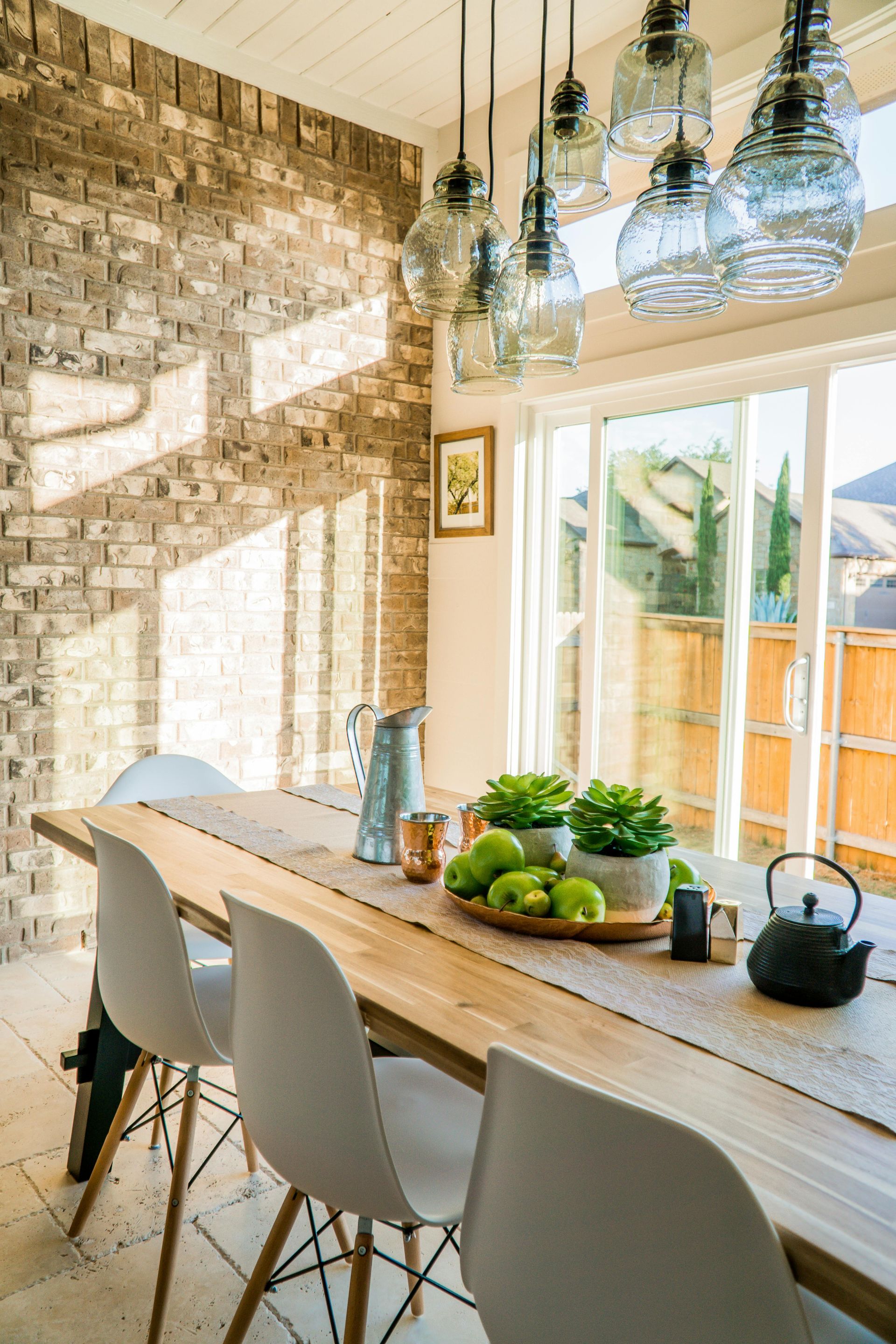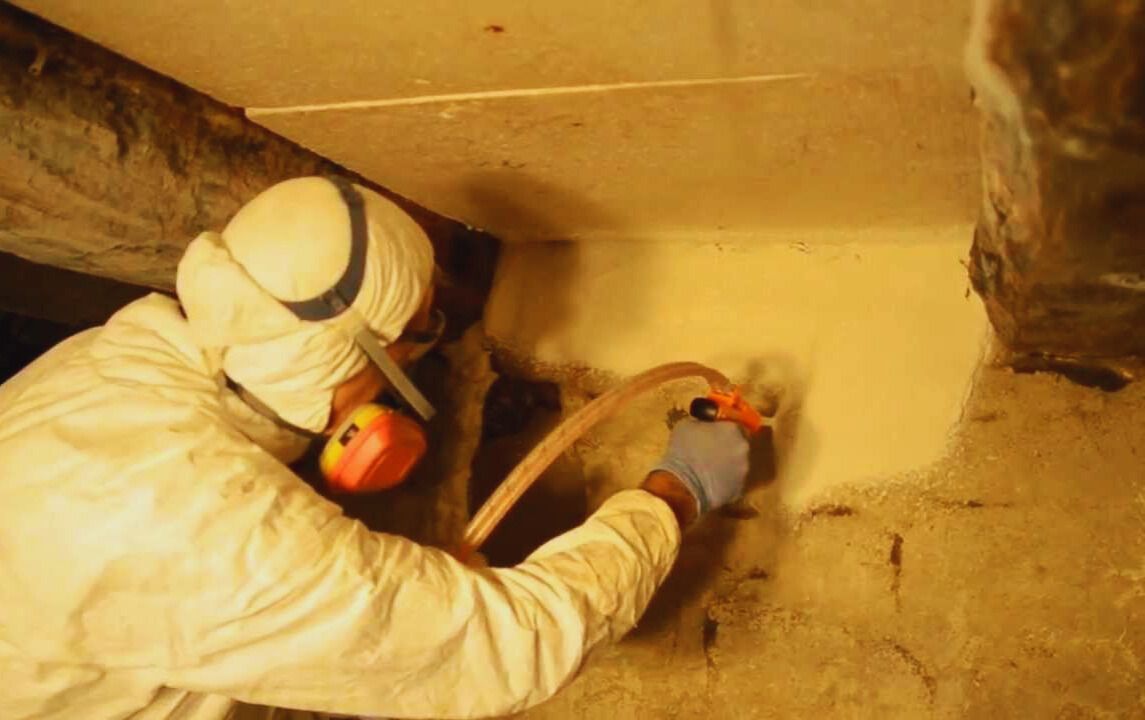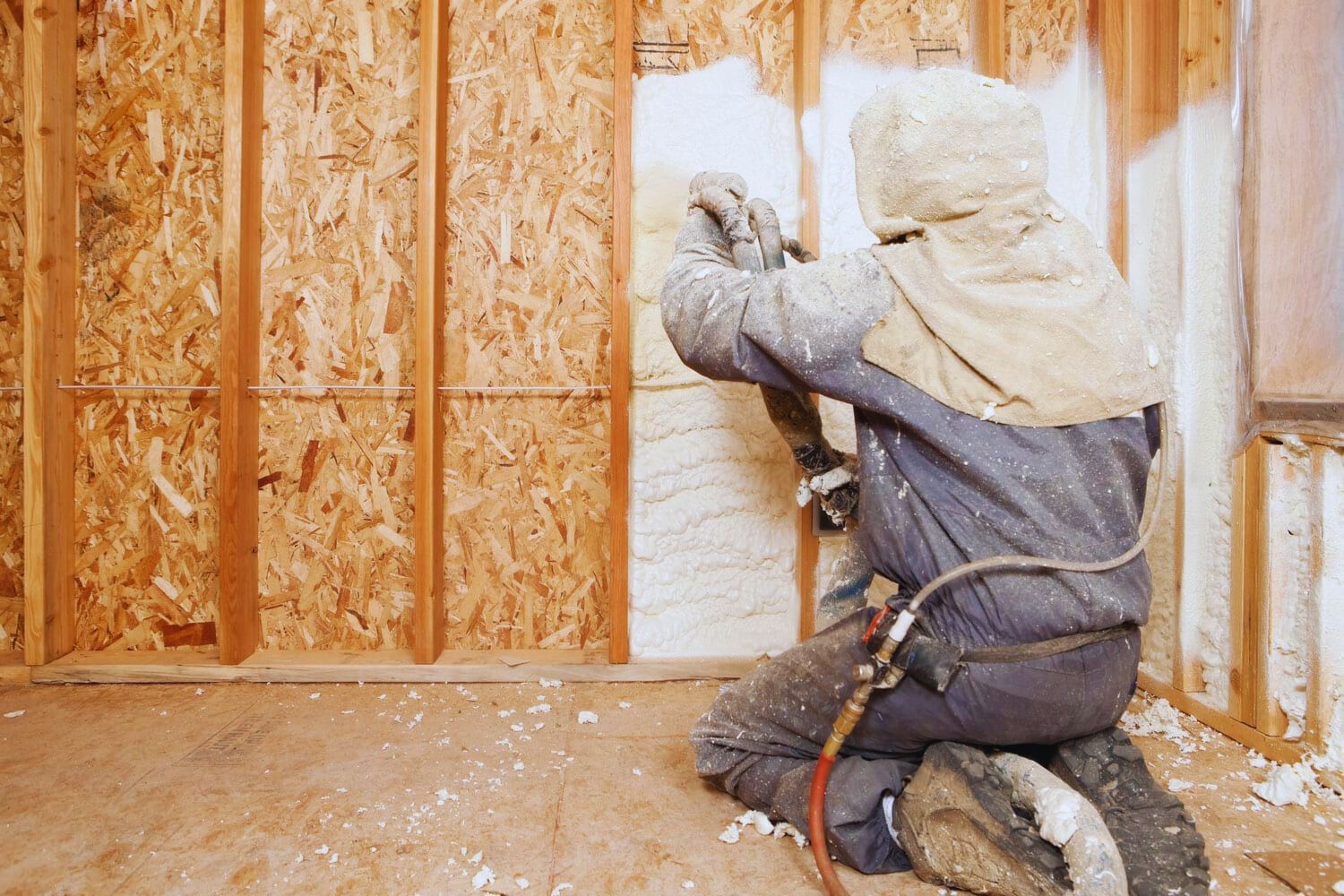Upfront Costs Versus Long-Term Savings in energy Bills and Maintenance
A comprehensive analysis for Georgetown homeowners
Investing in insulation for your home is a smart move, but many homeowners hesitate due to concerns about upfront costs. We understand these worries and want to shed light on the financial aspects of insulation. By breaking down the initial expenses and comparing them to long-term savings, we can see that insulation often pays for itself through reduced energy bills and minimal maintenance requirements.
Quality spray foam insulation can significantly lower heating and cooling costs, sometimes by up to 20%. While the initial investment may seem substantial, the monthly savings on energy bills add up quickly. These savings continue year after year, providing a steady return on your investment.
Key Takeaways
- Insulation typically offers substantial long-term savings despite upfront costs
- Energy bill reductions can offset initial expenses within a few years
- Proper insulation requires minimal maintenance, further enhancing its cost-effectiveness
Understanding the Basics of Insulation and Home Energy Efficiency
Insulation plays a crucial role in maintaining a comfortable and energy-efficient home. It helps regulate indoor temperatures and reduces the workload on HVAC systems, leading to significant energy savings.
The Role of Insulation in Energy Efficiency
Insulation acts as a barrier to heat flow, slowing the transfer of heat between the inside and outside of a home. In winter, it keeps warm air in, while in summer, it keeps hot air out. This thermal resistance is measured by R-value, with higher values indicating better insulating properties.
Properly insulated homes require less energy for heating and cooling, reducing the strain on HVAC systems. This leads to lower energy bills and a smaller carbon footprint. We recommend insulating attics, walls, floors, and basements for maximum efficiency.
Key areas to focus on include:
- Attic insulation
- Wall insulation
- Floor insulation over unheated spaces
- Basement wall insulation
Comparing Different Types of Insulation Materials
Various insulation materials are available, each with unique properties and applications. The most common types include:
- Fiberglass: Available in batts or loose-fill, it's affordable and widely used.
- Cellulose: Made from recycled paper products, it's eco-friendly and effective.
- Spray foam: Provides excellent air sealing and high R-value per inch.
- Mineral wool: Fire-resistant and sound-dampening.
MaterialR-value per inchCostInstallationFiberglass2.2 - 2.7$DIY or ProCellulose3.2 - 3.8$$ProSpray foam3.6 - 6.5$$$ProMineral wool3.0 - 3.3$$DIY or Pro
How Insulation Contributes to Overall Home Energy Usage
Insulation significantly impacts a home's energy consumption. The U.S. Department of Energy estimates that homeowners can save up to 20% on heating and cooling costs by adding insulation to attics, floors, and basements.
We've observed that well-insulated homes maintain more stable indoor temperatures, reducing the frequency of HVAC system cycles. This leads to less energy usage and lower utility bills, whether the home uses electric heat or natural gas.
Insulation also works in tandem with other energy-efficient measures:
- Air sealing to prevent drafts
- Energy-efficient windows and doors
- Proper ventilation to manage moisture
By combining these strategies, homeowners can create a more comfortable living environment while minimizing energy waste and reducing their carbon footprint.
Analyzing Upfront Costs
Investing in high-quality insulation involves several upfront costs that homeowners need to consider. We'll break down the initial investment, material and installation expenses, and additional assessment costs to provide a clear picture of what to expect.
Initial Investment for High-Quality Insulation
High-quality insulation is a significant upfront expense that pays dividends over time. The cost varies depending on the type of insulation chosen and the size of the area to be insulated. For example, fiberglass batts typically range from $0.64 to $1.19 per square foot, while spray foam can cost between $0.44 to $1.50 per board foot. Premium options like aerogel insulation can be even pricier.
Factors affecting the initial investment include:
- R-value requirements
- Insulation thickness
- Area to be insulated
- Accessibility of installation spaces
Cost Breakdown of Insulation Materials and Installation
The total cost of insulation includes both materials and labor. Here's a brief breakdown:
Materials:
- Fiberglass: $0.30-$0.50 per square foot
- Cellulose: $0.60-$1.80 per square foot
- Spray foam: $1.50-$3.50 per square foot
Installation: Labor costs typically range from $0.25 to $0.50 per square foot for basic installations. Complex jobs or hard-to-reach areas may increase this cost.
Additional expenses may include:
- Vapor barriers
- Fasteners and sealants
- Protective gear for installers
Additional Costs: Assessing Energy Audit and Ductwork Expenses
A comprehensive insulation project often starts with a home energy audit. This assessment identifies areas of heat loss and helps prioritize insulation needs. Energy audits typically cost between $200 and $650, depending on the home's size and the audit's complexity.
Ductwork inspection and sealing are crucial for maximizing insulation effectiveness. Costs for ductwork services can range from $450 to $2,000, covering:
- Inspection of existing ducts
- Sealing leaks and gaps
- Insulating exposed ductwork
These additional assessments and repairs contribute to the overall upfront costs but are essential for achieving optimal energy efficiency and long-term savings.
Exploring Incentives and Financial Assistance
Numerous financial incentives and assistance programs can significantly offset the upfront costs of energy-efficient home improvements. These options make sustainable upgrades more accessible and affordable for homeowners looking to reduce their long-term energy expenses.
Federal Tax Credits and Government Incentives
The federal government offers substantial tax credits for energy-efficient home improvements. Homeowners can claim up to 30% of the cost of qualifying insulation projects, with a maximum credit of $1,200 per year. This credit applies to materials and professional installation costs. Additionally, the Department of Energy provides grants and low-interest loans for energy-saving renovations through various programs. We recommend checking the ENERGY STAR website for the most up-to-date information on available federal incentives.
Local Rebates and Solar Incentives
Many states and utility companies offer rebates for energy-efficient upgrades, including insulation improvements. These rebates can range from $100 to $1,000 or more, depending on the project scope. For solar energy installations, local incentives often include property tax exemptions and performance-based incentives. We suggest contacting your local utility provider or visiting the Database of State Incentives for Renewables & Efficiency (DSIRE) to find specific rebates in your area.
Financing Options and Power Purchase Agreements
Several financing options can help spread out the cost of energy-efficient upgrades. Home equity loans and energy-efficient mortgages allow homeowners to borrow against their property's value for improvements. Some lenders offer specialized "green loans" with competitive rates for eco-friendly projects. Power Purchase Agreements (PPAs) are popular for solar installations, allowing homeowners to install panels with little to no upfront cost. Under a PPA, a third party owns and maintains the system while the homeowner pays for the generated electricity at a reduced rate.
Long-Term Savings on Energy Bills
Investing in energy-efficient solutions can lead to substantial savings over time. We'll explore how reducing monthly expenses, proper insulation, and solar energy can significantly impact your utility costs.
Reducing Monthly and Annual Energy Expenses
Energy-efficient upgrades can dramatically lower your monthly bills. LED lighting uses up to 75% less energy than traditional bulbs, cutting electricity costs. Smart thermostats optimize heating and cooling, potentially saving 10-15% annually. Energy Star appliances use 10-50% less energy than standard models.
We recommend sealing air leaks around windows and doors to prevent heat loss. This simple step can reduce energy bills by up to 15%. Regular HVAC maintenance ensures peak efficiency, saving 5-15% on heating and cooling costs.
Programmable power strips can eliminate standby power consumption, saving up to $100 per year. Using cold water for laundry and running full loads can reduce water heating expenses by 50%.
Impact of Insulation on Long-Term Energy Bills
Proper insulation is crucial for long-term energy savings. We've seen attic insulation alone reduce heating and cooling costs by 15%. Wall insulation can save an additional 15-20% on energy bills.
Insulation's R-value measures its effectiveness. Higher R-values mean better insulation. For attics, we recommend R-38 to R-60 in most climates. Walls typically need R-13 to R-21.
Here's a breakdown of potential annual savings with proper insulation:
- Attic: $100-$500
- Walls: $200-$400
- Floors: $100-$300
- Basement: $250-$500
The initial investment in quality insulation typically pays for itself within 3-5 years through reduced energy bills.
Solar Energy and Its Effect on Utility Costs
Solar panels can drastically reduce or eliminate electricity bills. The average home solar system saves $10,000-$30,000 over its lifetime. Initial costs vary, but federal tax credits can offset 30% of the installation price.
Solar energy production peaks during high-demand hours, maximizing savings. Net metering allows excess energy to be sold back to the grid, further reducing costs.
Battery storage systems enhance savings by storing excess energy for use during non-sunlight hours or power outages. This can lead to near-zero electricity bills in some cases.
Solar water heaters can cut water heating bills by 50-80%. While less common, they offer significant savings for homes with high hot water usage.
Maintenance Considerations and Costs
Proper maintenance is crucial for maximizing the efficiency and longevity of insulation and HVAC systems. Let's explore the key aspects of maintenance and associated costs for energy-efficient home improvements.
Ongoing Maintenance Needs for Insulation and HVAC Systems
Regular inspections are essential for insulation and HVAC systems. We recommend annual checks for insulation to identify any settling, moisture damage, or pest infestations. These issues can compromise insulation effectiveness if left unaddressed.
For HVAC systems, quarterly filter changes and annual professional tune-ups are typically necessary. Smart thermostats can alert homeowners to potential issues, reducing unexpected breakdowns and maintenance costs.
Heat pumps require bi-annual servicing to ensure optimal performance. This includes cleaning coils, checking refrigerant levels, and lubricating moving parts.
Longevity of Insulation and Replacement Costs
Quality insulation can last 20-30 years or more with proper maintenance. Fiberglass and cellulose insulation may need replacement sooner if exposed to moisture or pests.
Replacement costs vary based on insulation type and home size. On average, re-insulating an attic can cost $1,500 to $3,500. However, this investment typically pays for itself through energy savings within 3-5 years.
Spray foam insulation has a longer lifespan, often lasting 80-100 years with minimal maintenance. While more expensive upfront, its durability can lead to significant long-term savings.
Comparing Maintenance Costs: Traditional vs. Energy-Efficient Systems
Energy-efficient systems generally have lower maintenance costs than traditional ones. A high-efficiency HVAC system may cost 10-20% less to maintain annually compared to older models.
Traditional systems often require more frequent repairs as they age. We've observed that energy-efficient heat pumps can reduce maintenance costs by up to 30% over their lifespan.
Energy-efficient insulation requires less frequent replacement, leading to lower long-term costs. While the initial investment may be higher, reduced energy bills and maintenance needs typically result in net savings within 5-10 years.
Environmental and Home Value Impacts
Proper insulation offers significant environmental benefits and can increase a home's value. Energy efficiency and renewable energy use reduce carbon footprints, while enhancing insulation boosts property appeal and resale potential.
Reducing Your Carbon Footprint Through Energy Efficiency
Insulation plays a crucial role in reducing a home's carbon footprint. By minimizing heat loss in winter and heat gain in summer, it decreases the energy needed for heating and cooling. This leads to lower greenhouse gas emissions from power plants.
We've seen homes with proper insulation cut their energy consumption by up to 40%. This translates to a substantial reduction in CO2 emissions over time.
Insulation also helps prevent air leaks, further improving energy efficiency. Sealing gaps and cracks stops conditioned air from escaping, reducing the workload on HVAC systems.
Environmental Benefits of Renewable Energy Utilization
Combining insulation with renewable energy sources amplifies environmental benefits. Solar panels, for instance, generate clean electricity to power homes.
Well-insulated houses require less energy overall, making it easier to meet their needs with renewable sources. This creates a synergy between insulation and green energy.
We've observed homeowners who pair insulation upgrades with solar installations often achieve net-zero energy status. This means they produce as much energy as they consume annually.
Geothermal heat pumps also work more efficiently in well-insulated homes. They can provide both heating and cooling with minimal environmental impact.
How Insulation Affects Home Value and Resale Potential
Proper insulation significantly boosts a home's value and appeal to potential buyers. Energy-efficient homes command higher prices in today's market.
We've seen insulation upgrades increase home values by 2-6%. This represents a solid return on investment for homeowners.
Buyers are increasingly aware of energy costs. A well-insulated home promises lower utility bills, making it more attractive.
Energy efficiency certifications, which often consider insulation, can increase a home's resale value by up to 10%. These certifications serve as proof of a home's performance.
Comfort is another factor. Well-insulated homes maintain more consistent temperatures, enhancing livability and appeal to prospective buyers.
The Break-Even Point and Return on Investment
Investing in insulation involves upfront costs but can lead to significant long-term savings. We'll explore how to calculate the break-even point, project cost savings, and analyze factors affecting the financial payback of insulation upgrades.
Calculating the Time Needed to Recoup Initial Costs
To determine the break-even point for insulation upgrades, we compare the initial investment to the expected annual energy savings. For example, if the insulation costs $5,000 and saves $500 per year on energy bills, the break-even point would be 10 years.
We use this formula: Break-Even Time = Initial Cost / Annual Savings
It's important to consider local energy prices and climate when estimating savings. In colder regions, insulation may pay for itself faster due to higher heating costs.
Projecting Long-Term Cost Savings and Energy Independence
After reaching the break-even point, all further savings contribute to your return on investment. We typically see insulation last 20-30 years, providing substantial long-term benefits.
Projected 20-Year Savings Example:
- Initial Cost: $5,000
- Annual Savings: $500
- Total Savings: $10,000 ($500 x 20 years)
- Net Profit: $5,000
This example shows a 100% return on investment over 20 years. Enhanced insulation also reduces dependence on external energy sources, contributing to greater energy independence.
Factors Affecting the Financial Payback of Insulation Upgrades
Several variables can impact the financial return of insulation:
- Type of insulation: Different materials offer varying R-values and costs.
- Installation quality: Proper installation ensures maximum efficiency.
- Energy prices: Higher energy costs lead to faster payback periods.
- Home construction: Existing insulation levels affect potential savings.
- Climate: Extreme temperatures increase potential energy savings.
We also consider indirect benefits like improved comfort and increased property value. These factors, while harder to quantify, contribute to the overall return on investment.
Conclusion & Next Steps for Homeowners
Energy efficiency upgrades offer a smart path to long-term savings. We encourage homeowners to carefully weigh upfront costs against potential benefits.
Start by assessing your home's current energy usage. Consider scheduling a professional energy audit to identify key areas for improvement.
Research available rebates and incentives. The Department of Energy offers resources on federal, state, and local programs that can offset initial expenses.
Prioritize upgrades based on your budget and expected return on investment. High-impact, low-cost changes like sealing air leaks or adding insulation often provide quick payback.
For larger projects, explore financing options. Many lenders offer specialized energy efficiency loans with favorable terms.
Remember, even small steps can make a difference. Implement changes gradually if needed, focusing on the most impactful improvements first.
By investing in energy efficiency, we not only reduce our bills but also increase home comfort and value. Let's take action today for a more sustainable, cost-effective future.
You might also like
GPI Articles


Request Service Today!
Thank you for contacting us.
We will get back to you as soon as possible.
Oops, there was an error sending your message.
Please try again later.
Revolutionize your living experience with our top-tier spray foam insulation service, designed to elevate your home's energy efficiency and comfort levels to new heights. Our dedicated team of professionals brings years of expertise to every project, ensuring precise installation of high-quality spray foam insulation throughout your entire home. Bid farewell to pesky drafts, soaring energy bills, and uneven indoor temperatures as our meticulously applied insulation seals every nook and cranny, creating a cozy and consistent climate year-round. Not only does our insulation solution enhance your comfort, but it also promotes environmental sustainability by reducing energy waste and lowering your carbon footprint. Rest easy knowing that our comprehensive insulation package is tailored to suit your home's specific needs, providing lasting performance and peace of mind for you and your family. Experience the transformative power of superior insulation with our trusted service. Interested in knowing more? Check out our Blog!






